The way corrective lenses will work on Apple’s Vision Pro headset is still a bit of a mystery, but we now have a better idea of what it may look like.
Taking a look at TCL’s NXTWEAR S smart glasses and its solution for spectacle wearers has given us some insight into the complications, the time frame, and the all-important cost of Apple’s future system, as well as how long we should expect the new lenses to last.
A similar solution for glasses wearers
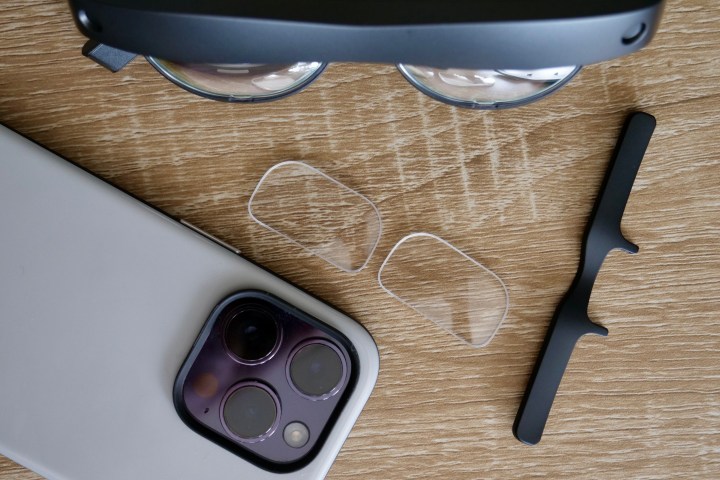
The TCL NXTWEAR S isn’t really a direct Vision Pro competitor, but it could be seen as an alternative by those who want the big-screen experience provided by Apple’s headset without the massive initial cost or OS and app integration. TCL’s smart glasses connect via a cable to your phone or laptop and mirror the display. But the screens inside the NXTWEAR S are still only a short distance away from your eyes.
This means if you wear spectacles to correct your vision, you probably won’t see the screens very well. But the design of the NXTWEAR S means you can’t wear your glasses with it, much like the Vision Pro. TCL’s solution is to include a special lens kit consisting of a small frame and two small lens templates, which magnetically attaches to the inside of the main unit. There are definite similarities between TCL’s system and Apple’s system, except TCL doesn’t have a partnership with a lens maker like Zeiss — leaving it entirely down to you to get proper lenses made.
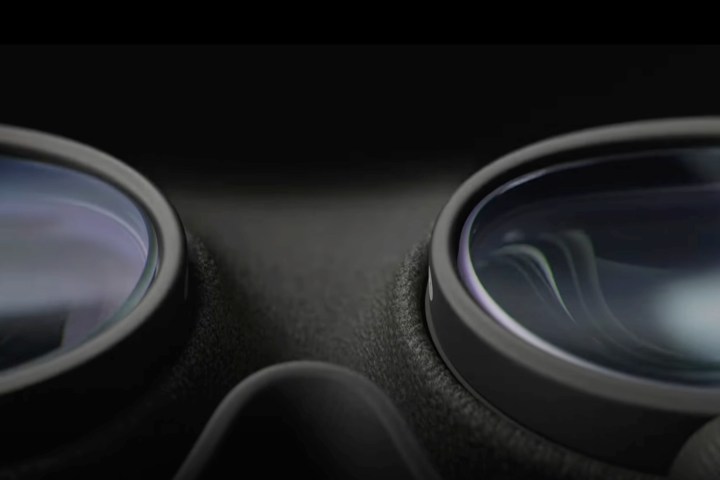
What this means is in addition to the extra expense on top of the product — just like the Vision Pro — there’s also the added hassle of getting custom lenses made so you can see what’s going on in your new smart glasses.
To find out how difficult and expensive it is to get lenses made up for the TCL NXTWEAR S, I visited a local optician to ask for advice. What I found out also gave me a hint about what will happen with the Apple Vision Pro.
An expert’s advice
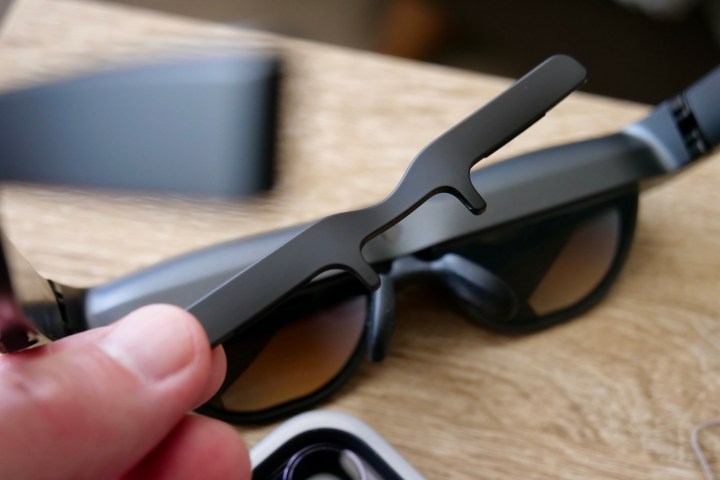
I spoke to Anru Calitz, practice manager at Gregory & Seeley optometrists. It was the first time he and the team had seen a pair of TCL’s smart glasses, but he was familiar with Google’s approach to corrective lenses for Google Glass, so the concept itself was not alien.
Calitz examined TCL’s lens accessory and confirmed getting lenses custom-made wasn’t a problem, but there were some restrictions due to the small size. Only single vision lenses could be made, not varifocals, for example. He said 1.6 high refractive lenses would be used, and his lens supplier would make these with antiglare and anti-scratch coatings as standard. His recommendation was to use a brand new prescription to ensure you’d get the best experience, as well as for longevity.
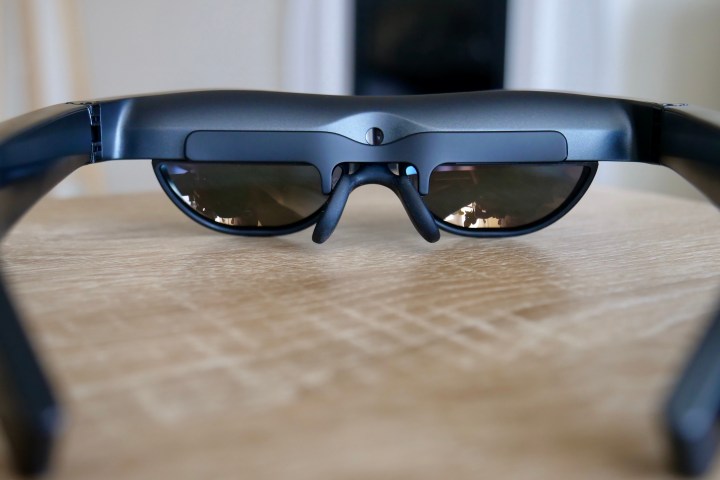
On the subject of how long he expected them to last, it all came down to how much your prescription changes over time. If only small changes occurred on an annual basis, in his opinion, it would be possible to skip a year and get them replaced every two years. More dramatic changes to the prescription may mean an annual update would be necessary.
The lenses would be created and fitted to the magnetic accessory off-site, the work would take less than a week, and the estimated cost would be 230 British pounds — or around $295.
Any problems?
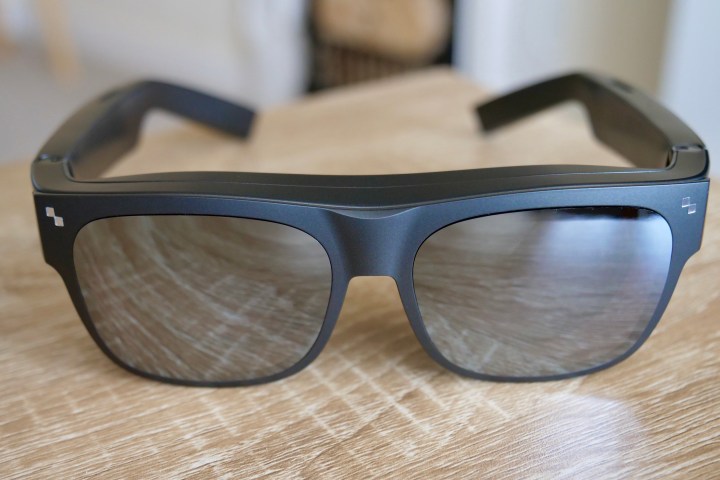
I asked calitz if he could foresee any problems with the custom lenses. The only concern he had would be ensuring you could actually see what was going on once the lenses were made. Assuming the prescription was up-to-date and the lenses had been made correctly, there was still a chance they wouldn’t suit your vision needs due to the flatness of the lens design, which is very different from the curved lenses fitted to traditional spectacle frames. If they didn’t work for you, they’d need to be sent off and reengineered, incurring additional expense and taking more time.
Corrective lenses are pretty standard things, so all of the optical side of TCL’s solution will also likely apply to Apple’s Vision Pro. A brand new prescription would be highly advisable, not all types of prescription will be possible, and you should expect to update them every two years. The price is also likely to be similar, but as I was not quoted for Zeiss lenses — one of the best, and most expensive options — it will probably be higher rather than much lower.
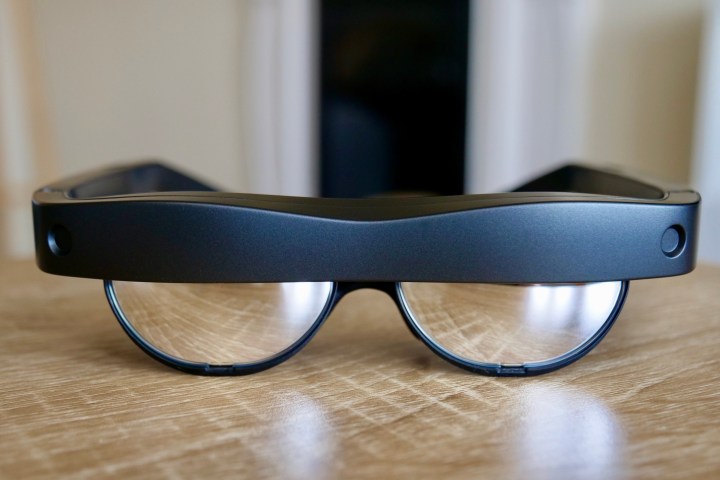
I was also acutely aware that I was speaking to a professional, and not just entering my prescription into a website and waiting to see what arrived a week or so later. Vision is an exceptionally personal thing, and I had the impression that by dealing with an actual person who would then place the order for the lenses that I was more likely to get a good end result.
It’s also a lot more convenient if the lenses end up not being quite right, as you could talk through any issues and the expert could offer solutions. It’s hard to do that when all you do is enter numbers into a field on a website.
What it all means for Apple
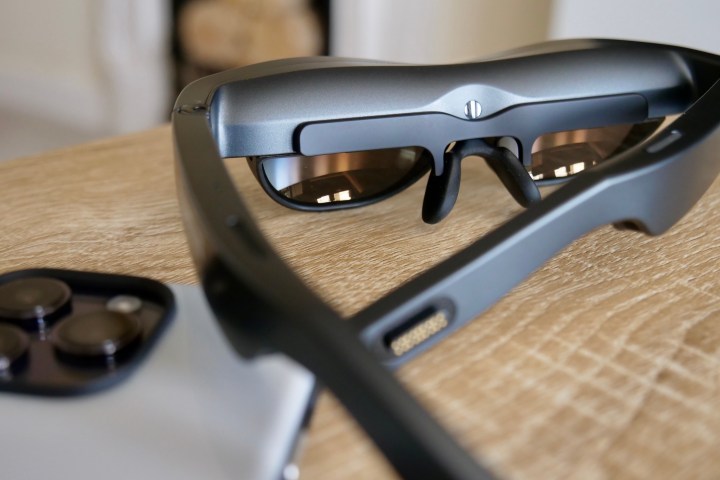
Neither TCL or Apple ignore people who require corrective lenses, but it’s clear from investigating the cost and difficulty of getting lenses for the NXTWEAR S what direction Apple needs to take. An online system for ordering is inevitable, and it’s already proven to work by many online spectacle retailers. But in addition to this, it does need to offer an in-person fitting service — especially if the cost is in excess of $300. It could also introduce the “try X versions at home for free, pick the best, and send back the rest” model loved by online spectacle firms, so buyers don’t have to risk multiple tries to get them right.
As for the NXTWEAR S, if you wear glasses, then don’t buy them expecting to wear both at the same time, as it doesn’t work. If you need corrective lenses, then you must factor in the cost and inconvenience of getting them made up for the headset. TCL doesn’t have a partner like Zeiss, or any way to order the lenses directly. You’ll need to visit your own optician, and hope they are as willing and helpful as Calitz was to me.
Additionally, although an extra $295 or so isn’t a whole lot to spend after you’ve paid $3,500 for Apple Vision Pro, it’s more than half the price of the $400 TCL NXTWEAR S, and that should give anyone pause for thought. I’m in the process of reviewing TCL’s latest smart glasses, and didn’t have a good experience with the first version when I tried them out in 2021, so investing in corrective lenses wouldn’t have been worth it at all. My first impressions of the NXTWEAR S are much more positive, at least regarding the hardware, and we’ll have more details soon.
Apple plans to release the first versions of the Vision Pro in early 2024.
Editors' Recommendations
- Apple’s Vision Pro headset can now be used to shop at Best Buy
- The Tecno Pocket Go looks like the AR glasses of my dreams
- The OnePlus 12 has one big advantage over Samsung and Apple
- I hope Apple brings this Vision Pro feature to the iPhone
- The Apple Vision Pro has given VR its iPhone moment




